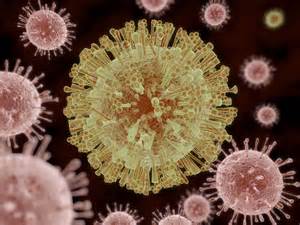|
Join Our List
 |
|
Robin Novak, RN, CIC
|
 |
|
Director of Infection Prevention
and
Endoscopy
636.875.5088 ext. 101
|
|
This Month's Training Opportunities
|
 |
February
Multiple Dates to be announced very soon.
Healthcare Laundry: Microbe-Host?
Over 70 Infection Prevention
topics/presentations available in our library.
|
|
Surveyor's Corner
|
 |
|
Cathy Montgomery, RN, CASC
AAAASF Surveyor
636.875.5088 ext 102
Any services provided under contract at your ASC must be provided in a "safe and effective manner". You will find this language in the Federal Guidelines Appendix L 416.41(a). If you drill down further you will see the directions specifically asks the surveyor to "see the most recent assessment of" as well as make sure contracts in general are incorporated into the QA Program. While laundry is not specifically used as an example, clearly it is being singled out by surveyors in addition to the cleaning service. This is in part due to the correlation to infection control, QA/PI, as well as governance. So what would be a way to illustrate compliance? Notes representing your communication when information is needed or improvement is desired. An annual review and reporting on the services provided would generally be expected. This could include but not limited to how linens are delivered, are they securely wrapped? How are the linen transported? A simple review of the vehicle would determine if clean linens are segregated from dirty. Does the interior of the vehicle appear to be clean? Obviously this requires a visit to the vehicle, this can be easily accomplished and documented! Stay tuned for additional information on laundry service reviews from Excellentia Advisory Group in our upcoming webinar.
|
|
|
|
Volume 1, Number 4
|
February 2017
|
 |
This month we want to talk about healthcare laundry. Not so exciting you say? Did you know however that your healthcare linen could be a microbe-host? So I have a little to say about that in this newsletter. Also, the Excellentia team and I went into a HLAC-certified healthcare laundry facility this past month and did an on-site tour and interview to show you what you must look for in a reputable healthcare laundry service that will minimize your chances of your linen being microbe-hosts. This on-site visit will be spotlighted in our February webinar and VUD presentation. Stay tuned and don't miss it!
ABOUT ROBIN NOVAK, RN, CIC
Registered Nurse, Certified Infection Preventionist dedicated to disease prevention and high quality healthcare. Strong decision maker who understands the importance of patient, visitor and staff safety following evidence based best practices.
Driven and compassionate healthcare professional with 30 years hands-on experience in fast-paced ambulatory surgery center and hospital environments. Accountable and responsible with an additional focus on Quality Assurance Process Improvement
.
In the past, Robin has served as the SGNA Carolina Chapter President, involved in SGNA Practice Committee as well as a Regional Committee member. Robin has been active with APIC and is a current member of APIC PALMETTO. Robin was prior employed at the Ambulatory Surgery Center of Spartanburg since 2004 and held roles of Endoscopy Nurse, Endoscopy Charge Nurse and most recently the Quality Assurance Process Improvement Coordinator. Robin has worked on several infection prevention projects for Excellentia Advisory Group including a key role as a faculty speaker at our annual Infection Prevention Strategies for ASC's conference in Las Vegas.
Robin is now Excellentia's Director of Infection Prevention & Endoscopy.
|
|
HEALTHCARE LAUNDRY: MICROBE-HOST?
|
|
By Robin O. Novak, RN, CIC
As we explore avenues to prevent infection, it is prudent for facility leadership and infection preventionist to look at their contracted providers. While there are many contracted providers, today I want to discuss healthcare laundry. Surveyors are observing infection prevention breaches related to laundry intake and storage. What impact does laundry have on your patients and staff?
While it is true, there are limited documented infectious outbreaks due to laundered healthcare textiles; a quick search will reveal an increased frequency. In some of the instances, patients have died. Therefore, it is important for end users to be aware of the current recommended standards.
Some primary standards include:
- Protect laundry from washer to patient skin
- Functional separation between all laundry processes
- Utilization of proper wash parameters
While contracts with providers which are healthcare laundry certified and accredited are desired, some areas lack access. What actions should the ASC leadership take to support limited microbial organism host opportunities occur with their contracted laundry service? Are you interested in learning more? Be sure to attend the upcoming webinar:
Healthcare Laundry: A microbe Host?
(i.e.: How to Select a Healthcare Laundry Service)
|
| Critter Craze |

By Robin O. Novak, RN, CIC
By now, everyone across the world is familiar with the Zika Virus. We heard the concerns vividly expressed during the recent Olympic games. But, the onslaught of media attention has diminished over the past several months. Does that mean Zika is no longer a concern? Absolutely not. Here in the United States, it is winter, and the Zika virus is transmitted through the bite of an infected Aedes mosquito.
Facts:
Infection control in healthcare settings:
- Zika is a nationally reportable condition. Notify your local, state and national health department of suspected cases.
- Follow standard precautions to protect healthcare worker (HCW) from blood and body fluid exposure. Appropriate PPE's and hand hygiene
- Leadership should exercise caution and judgment in accommodating pregnant HCW concerned with potential exposure.
- If ANY percutaneous, non-intact skin or mucous membrane exposure to blood, body fluids, secretions and excretions from a positive Zika patient, HCW should be evaluated by occupational health. Open wounds and skin sites should be washed with soap and water immediately. Mucous membranes should be flushed with copious amounts of water
- Work restrictions for positive HCW: no work or patient care duty restrictions for the asymptomatic HCW. Restrictions of the symptomatic HCW should be case-by-case
- Environmental cleaning: requires a 2-step process. Clean and then disinfect with an EPA-registered disinfectant. HCW should follow standard precautions.
- Reprocessing equipment: Strict adherence to manufacturer instructions for use for high-level disinfection and sterilization.
Generally, enveloped viruses are susceptible to the action of disinfectants. While you may not find Zika or another member of the virus family listed on a germicidal product pathogen inactivation claims list, that doesn't mean the product is ineffective against Zika. More than likely it is because these viruses are not typically transmitted via environmental surfaces.
On the other hand, medical instruments have the potential for contact with body fluids with the Zika virus present. Most high-level disinfectants (HLD) have label claims for a variety of enveloped viruses (Ebola, HCV, influenza, etc.). HLD are frequently capable of inactivating a variety of microorganisms including bacterial spores. If a product has demonstrated potency against bacterial spores and mycobacteria, it is reasonably assumed that the product is capable of fully inactivating Zika virus.
|
| GI Corner |
|
By Robin O. Novak, RN, CIC
The updated SGNA, AAMI and AORN endoscope reprocessing guidelines have a newly implemented inspection phase or safety stop. This has thrown a curve into many endoscopy center reprocessing departments. Most are unaware of what they should be looking for when they are performing the safety stop.
The safety stop is designed to be an opportune time to validate all manual cleaning has been performed effectively. Therefore, this is a great time to utilize an ATP device or another product which evaluates for residual proteins, carbohydrates, and heme. In addition, the person performing the reprocessing activities should look for any residual bioburden or detergent residue.
Is there anything else that should be monitored during this time? Absolutely! This is the best time to look for any anomalies to the endoscope. Are there any kinks, nicks or abrasions to the insertion tube. Do the control knobs torque the tip appropriately? Do all of the lights function? Are there any nicks to the port hole for the air/water and suction buttons?
Taking the time to evaluate the endoscope for anomalies will enhance the endoscope performance. By identifying issues early, the facility can prevent additional costly damage. An added incentive is a well maintained and processed endoscope will reduce opportunities for cross-contamination.
|
|
|
Infection Prevention WORD FIND
|
|
If you are in need of assistance with your infection prevention program, Robin will be able to assist with everything from setting up your program, training your Infection Preventionist, writing or editing Policies & Procedures or just simple telephonic consultation. Robin is taking on-site requests for 2017 at this time. Secure a date on her calendar now.
Please let us know how we can help.
Sincerely,
Cathy Montgomery, RN, CASC Robin Novak, RN, CIC
636-875-5088 extension 102 636-875-5088 ext. 101
See what's happening on our social sites.
|
|
|